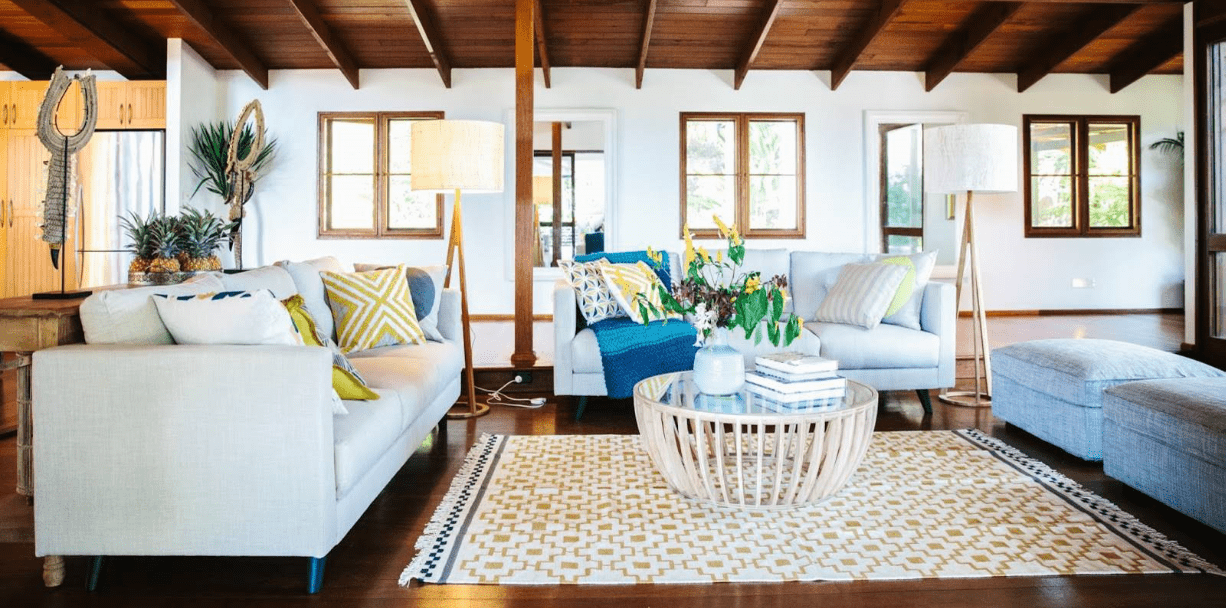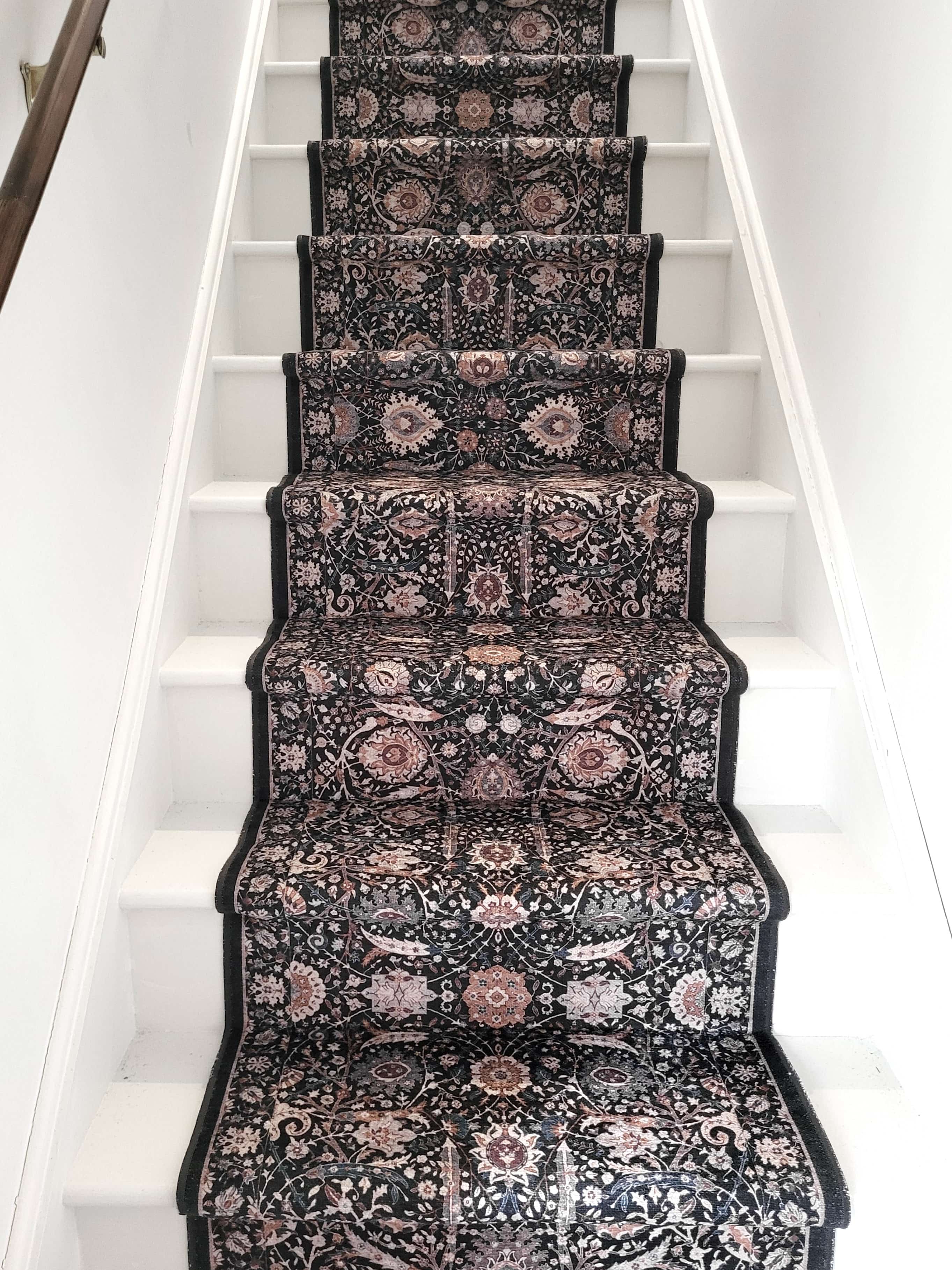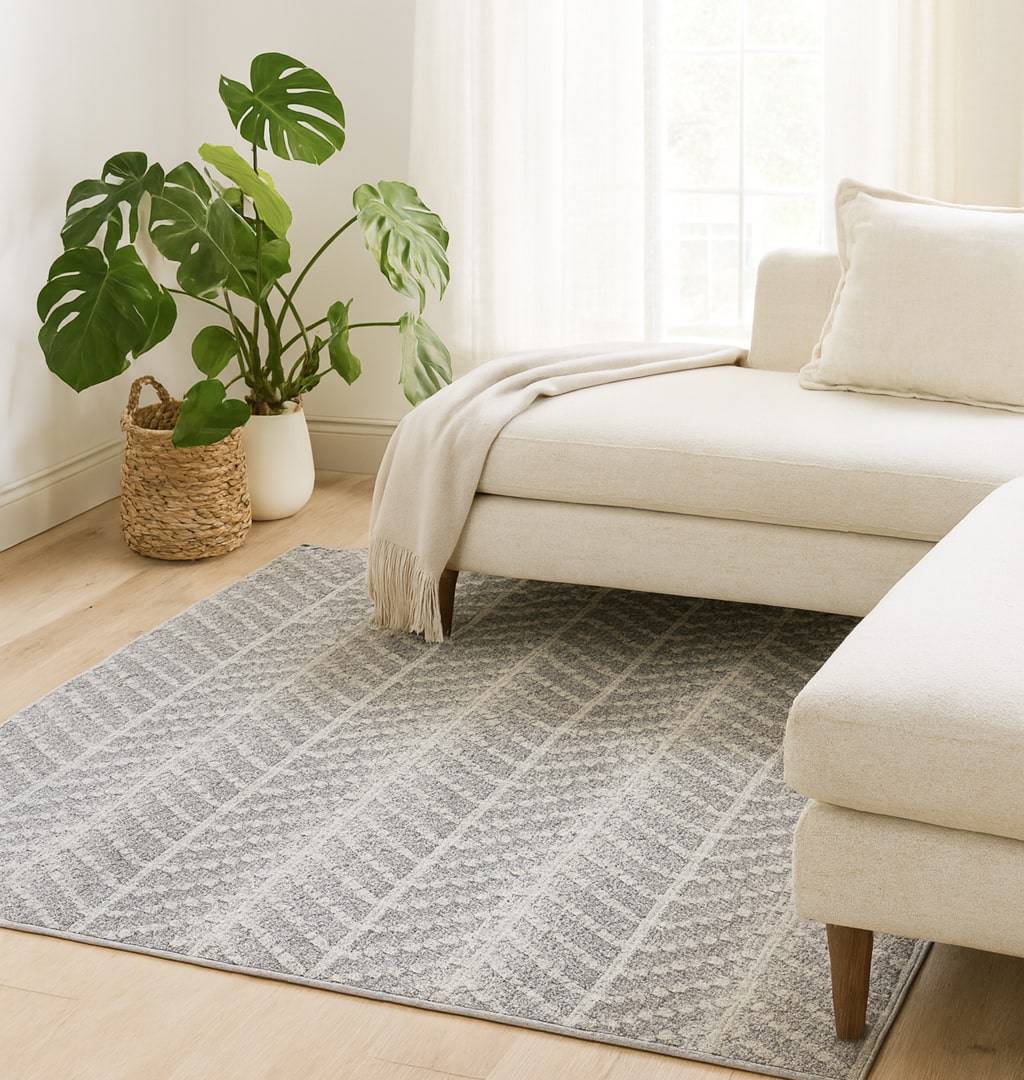Wondering how to place a rug to perfectly fit your home? You already know you want to enhance your décor with a thoughtful flooring solution—and you probably have a vision for the style you want—but questions about placement are common. Should your rug sit flush against the wall like carpeting? How much of it should be tucked beneath furniture? And what about trickier spaces like stairways or narrow entryways?
To help you make these important decisions, we've compiled our best tips on how to place a rug so it complements your space beautifully. Think of these as helpful guidelines, not hard and fast rules—feel free to experiment and let your creativity lead the way.
Living Room Rug Placement
Keep the Front Legs of Furniture on the Rug (Most of the Time)
One of the most cited rules of thumb is to place the front legs of a piece of furniture on a rug, while leaving the back legs off. This pulls the room together while creating the right balance of space.
Image Credit: Houzz
However, there are instances where it's okay to alter this advice. If you're working with multiple pieces of furniture, for instance, it can work to put a piece of furniture squarely on the rug (all four legs) while placing only the two front legs of other pieces on the rug. This technique works especially well if you'e trying to create a balance between larger pieces of furniture, such as a couch, and smaller ones, such as an armchair.
Place All the Furniture Legs off the Rug (Some of the Time)
Placing all the legs off the rug allows you to showcase more of your flooring solution. This approach works well if a coffee table anchors the rug. If the rug slides around on the floor, you can place a pad between the rug and the floor to help it stay in place.
Image Credit: Houzz
Placing all the furniture legs off a rug also works well with smaller area rugs, allowing the rug to bring a splash of color to the room while not being overshadowed by the larger items. If the rug slips around on the floor, you can place a pad between the rug and the floor to help it stay in place.
Image Credit: Houzz
Leave 18 Inches of Space Between a Rug and The Wall
Leaving space between a rug and a wall creates a better sense of proportion. 18 inches is the generally accepted standard. Don't stress about pulling out a ruler, however, if you're designing a smaller room. The measurement can be reduced to eight inches in these instances. As always, creative implementations mean you can bend the rules. Going wall-to-wall with your rug works if you're going for a more quirky or modern look.
Image Credit: Houzz
Bedroom Rug Placement
A Rug Should Extend 12-18 Inches Around the Bed
Placing a rug beneath a bed gives a room a cozy, comforting feel, but only if the rug extends far enough from beneath the bed to be visible. Making sure that at least a foot of a flooring solution peeps from beneath the bed is a good rule of thumb. More than that is okay too.
Image Credit: Houzz
If you want to place a smaller rug in your bedroom and know that your bed would dwarf it, consider placing the rug at the foot of the bed. In this case, the width should still be as wide or wider than that of the bed.

Image Credit: Houzz
Kitchen Rug Placement
Extend a Rug 24 Inches Around a Dining Table
Leaving two feet of rug on either side of a dining table makes pushing chairs towards and away from the table much easier, by allowing the chair legs to stay on the rug at all times (and not get caught between the floor and rug's edge).
Image Credit: Houzz
Runner Rug Placement
Add a Rug to Walkways
A rug can bring instant life to a narrow area such as a foyer or hallway. In these instances, a rug or runner should cover the majority of the floor. Not only does it look better, but it helps ensure that no one will trip over the rug's edge.
Image Credit: Houzz
To see rugs from Well Woven's collections, visit wellwoven.com. We're also always interested in hearing what you have to say. Drop us a line anytime at service@wellwoven.com.












Share:
Well Woven Creator Spotlight: Sara Pavao of SadiesLovelyLife
Well Woven Stories with Lynn Owens